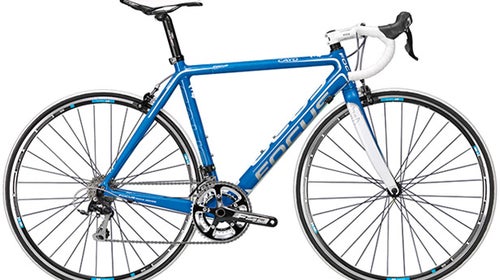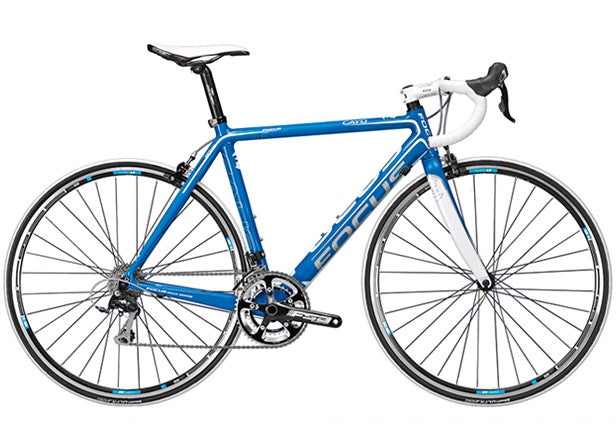FOCUS CAYO 4.0
$2,460
THE SELL: Carbon all-arounder at a reasonable price.
THE TEST: The Cayo 4.0 exemplifies trickle-down economics, translating expert German engineering in high-end race bikes into a balanced, sprightly ride for the rest of us. A stretched-out cockpit (the area between the handlebars and seatpost) and longer wheelbase make it remarkably stable coming down. It’s not the sveltest ride, due in part to the sturdier Shimano 105 components, nor is it made of the highest-grade carbon, so the road feel is more muted than snappy. But neither of those things is objectionable at this price point, especially considering the good looks and quality partsÔÇöincluding the sleek FSA stem and Continental tires.
THE VERDICT: A smooth, fast steed that won’t break your back or the bank. 19.2 lbs (56);
HANDLING: 4.3 (out of 5)
RESPONSIVENESS: 4
BH Prisma
$3,200
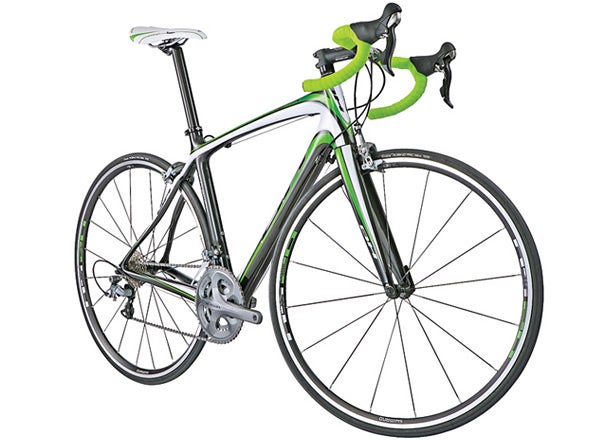
THE SELL: Comfort-performance meets quick handling.
THE TEST: The Prisma hits the sweet spot: plenty spry for the fast maneuvering and hard accelerations of big group rides but still plush enough to keep testers happy in the saddle three hours later. The featherweight frame (just 2.4 pounds)ÔÇłis partly to thank for its nimble handling, while the vertically compliant shaped carbon, compact top tube, and tall head tube contribute to that easy-on-the-back feel. Our only (minor) gripe: a few riders felt that the trade-off for all that comfort was slight flex in the bottom-bracket area.
THE VERDICT: “You almost forget the bike is there,” summed up one tester, “so you can just sit back and enjoy the ride.” 17.7 lbs (56);
HANDLING: 4.4
RESPONSIVENESS: 4.2
Both the Focus and BH, like an increasing number of mountain and road bikes, have tapered head tubes that flare out toward the front of the bike. It isn’t just for style; the design adds rigidity for more precise steering.
Cerv├ęlo R3
$3,200
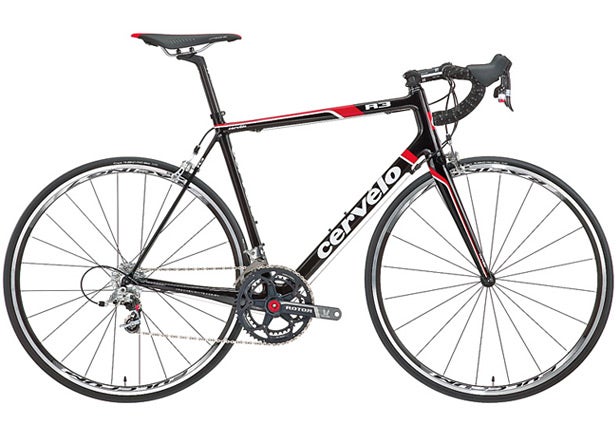
THE SELL: The fastest route to the top after an elevator.
THE TEST: Considering that the nude frame and fork would run you $2,800, the revamped R3 is an unbelievable deal. That means you get a SRAM Rival drivetrain, Fulcrum Racing 7 wheels, and lots of other bits for almost nothing. Even more remarkable is how well it climbs. “With those short chainstays, I felt like a rabbit,” one tester cracked. The R3 didn’t fare so well in the flats, though, where many felt the steering was squirrelly. A longer stem and wider bars would help solve that problem, but pre-ride this bike to make sure it’s right for you.
THE VERDICT: A solid starter race bike. 16.7 lbs (55);
HANDLING: 3.6
RESPONSIVENESS: 4.4
Pinarello Paris
$6,250
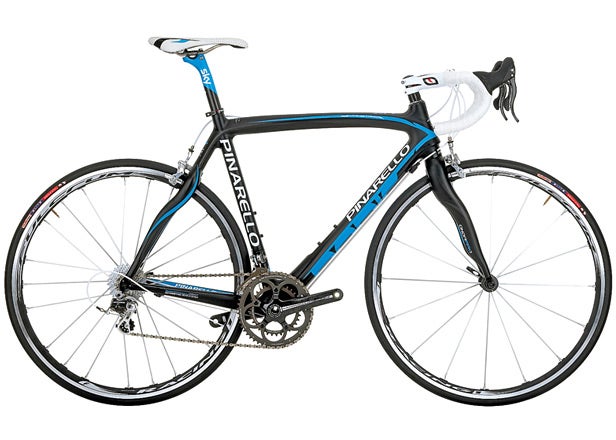
THE SELL: Race-winning design with only moderate sticker shock.
THE TEST: The most noticeable difference between the Paris and Pinarello’s Dogma, one of the decade’s most ballyhooed bikes? The Paris is half the price. You still get the asymmetric design (see below); the trade-off is that the Paris is made with slightly lower-grade carbon and a bit less shaping, especially in the chainstaysÔÇödifferences that add up to slightly more flex. But that extra give, compounded by the springlike compliance of the fork, is a good thing for most riders, who will appreciate the added supple┬şness.
THE VERDICT: Easily the most lust-inspiring bike in our test. 15.9 lbs (56);
HANDLING: 4.7
RESPONSIVENESS: 4.6
Calculating that the forces exerted on a frame vary from side to sideÔÇöthey’re greater on the drive┬ştrain side than on the oppositeÔÇöPinarello built an asymmetrical frame: the right half of the fork, headset, chainstays, and seatstays have all been reinforced.
Moots Vamoots RSL
$8,715
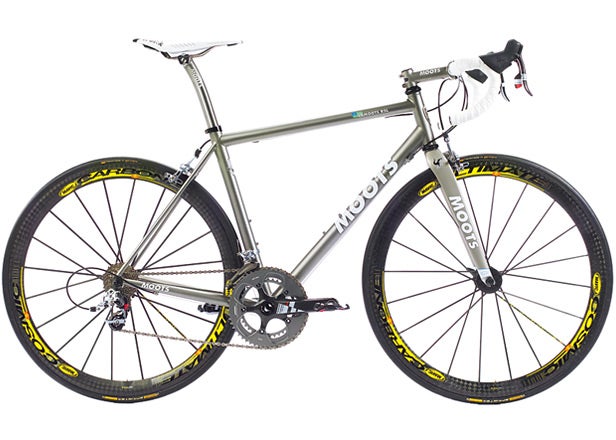
THE SELL: Metal is better than carbon fiber.
THE TEST: Think titanium is too mushy for a serious race bike? Think again. Built with oversize, U.S.ÔÇômade titanium tubing (except for the slender seatstays), the RSL adds a brawny bottom bracket and new dropouts to make this year’s model both lighter and stiffer than previous iterations. It’s the lightest bike we tested this year, and you can feel it: from flat-out sprints to out-of-the-saddle efforts on steep climbs, it was “a total rocket” in the opinion of several testers. We also loved its understated simplicity, especially the new red anodized bits and outlined logo, which add a hint of color.
THE VERDICT: Contrary to ultralight titanium’s reputation for flex, the RSL was rigid and confident. 15.5 lbs (56);
HANDLING: 4.7
RESPONSIVENESS: 4.8
Orbea Orca SRD
$5,400
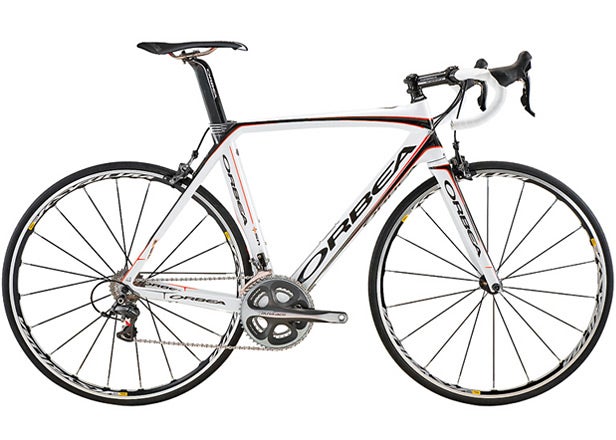
THE SELL: An aerodynamic racer gets even faster.
THE TEST: This year’s Orca scored near the top of the charts in almost every category we tested. The aero tubing on the 2011 edition is tweaked with new shaping in the fork, headset, seatpost, and chainstays to reduce drag. But what surprised us more than the quickness (this bike has always been fast) was the forgiving ride quality. “Angular tubes like these usually hurt, but here they were comfortable,” one tester commented.
THE VERDICT: Although we had small quibblesÔÇöthe Selle saddle felt like sitting on an anvil, the seat attachment was finickyÔÇöit’s hard to argue with a bike so silky and fast. 15.6 lbs (57);
HANDLING: 4.5
RESPONSIVENESS: 4.6
